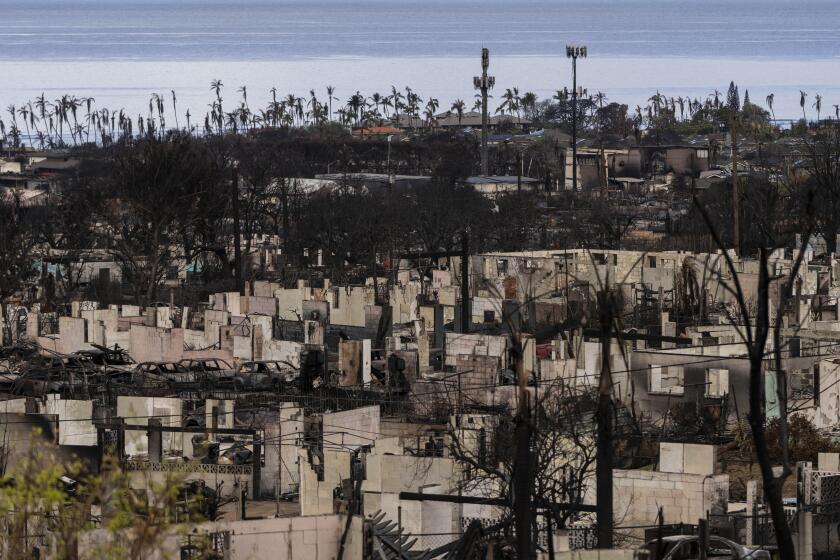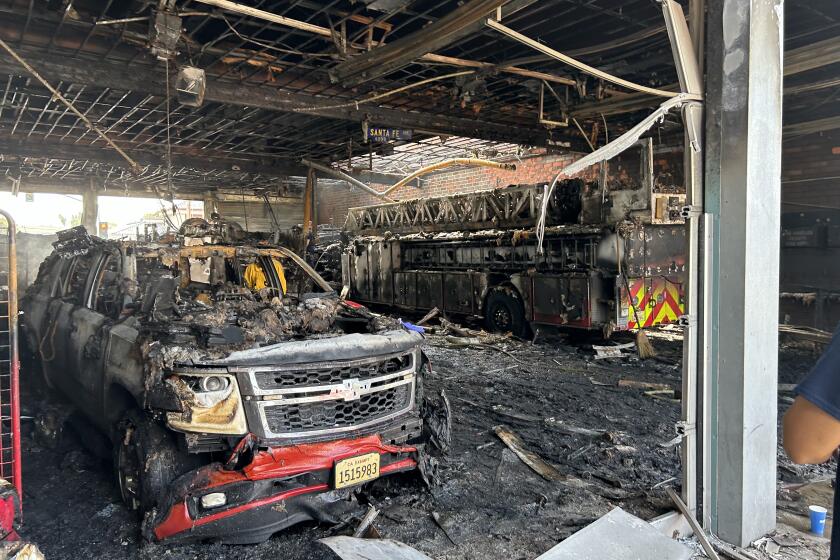Don’t Blame Mother Nature When There Are Arsonists : Why wildfire prevention now becomes arson law enforcement
Fire prevention and crime prevention in California are becoming one and the same. If that’s bad news, and it is, there is good news concealed within it, and we should begin with that.
The good news is that the measures taken to prevent and fight the periodic, naturally occurring brush fires of California--especially Southern California--are more effective than sometimes recognized. Building homes in a semidesert, which is what California would be if it didn’t have all the artificial irrigation, is hardly a crime against nature. Nor is it true that those who choose to live in the mountains, at the urban/rural interface, have only themselves to blame when their houses burn down.
No, if California had only naturally or even accidentally occurring brush fires to cope with, the sense of peril now in the air might be instead a sense of pride: in the dazzling skill of the pilots dropping water and flame retardant in smoke and darkness over rugged, confusing terrain; in the awesome stamina and splendid courage of firefighters battling an advancing wall of flame yard by yard; in the polished professionalism of firefighting management mobilizing an army in mere hours across municipal, county and state lines; in the designed fire prevention of the wise heads at Pepperdine University and, on a smaller scale, of more than a few homes.
More, much more, to be sure, can be done to prevent fires or facilitate their rapid containment. In a future editorial, we shall offer a checklist of available technical fixes, some of which should be imposed by law. But even as Californians make these incremental technical improvements in fire prevention, they must begin a deeper change, a true paradigm shift in the way that they think about fire.
Fire prevention, to repeat, is now crime prevention. When arson flares up all over the region at once, when different fires are linked by a common modus agendi, when plausible threats of multiple, simultaneous arson are received, the “game” has clearly changed.
Already concerned readers have written us with anti-arson suggestions, including proposals to fuse fire watch programs that now take place in our forests with the familiar neighborhood watch efforts against crime. Topanga Canyon’s volunteer Arson Watch has done this to good effect for 11 years. But as this week proves, a more aggressive version may be needed. One proposal was that when weather and wind conditions are at their worst, roads into high-risk areas be closed to all but residents.
Taking that suggestion would cost money, but the losses of the last week may rise to $2 billion or more. It could also require those who imagine that they have retreated to mountaintop isolation or ocean-side nirvana to face the typically urban hassle of dealing with the neighbors. But the arsonist is, unfortunately, a follow-home criminal. He follows you to the remote address where you thought you could get away from it all. To foil him, you may need the neighbors’ help.
The readers’ ideas, although good, are only a start. Gov. Pete Wilson offered another piece of the shift in thinking when he proposed that the sentence for arson be as much as life imprisonment instead of the current maximum of nine years. Arson investigators like those who met Monday at a kind of summit may well have further ideas about arson prevention.
Somehow, these and many other vectors need to converge in a new way of regarding fire prevention. Californians need to stop viewing brush fires solely as acts of God and start thinking of them as sometimes acts of criminal--even pathological--man. What the arsonists did to us in the last two weeks they can do to us next week, or the one after that, if weather conditions are right for their evil crime. We are no longer just fighting “it”; we are fighting “them,” and the sooner we recognize that, the better will be our chances of victory.
More to Read
Start your day right
Sign up for Essential California for news, features and recommendations from the L.A. Times and beyond in your inbox six days a week.
You may occasionally receive promotional content from the Los Angeles Times.





